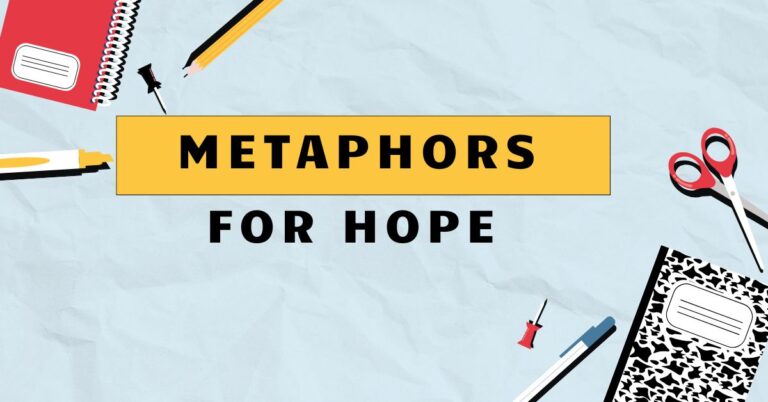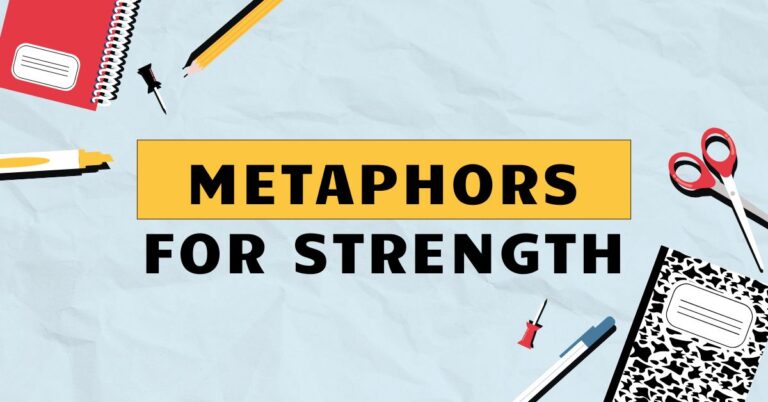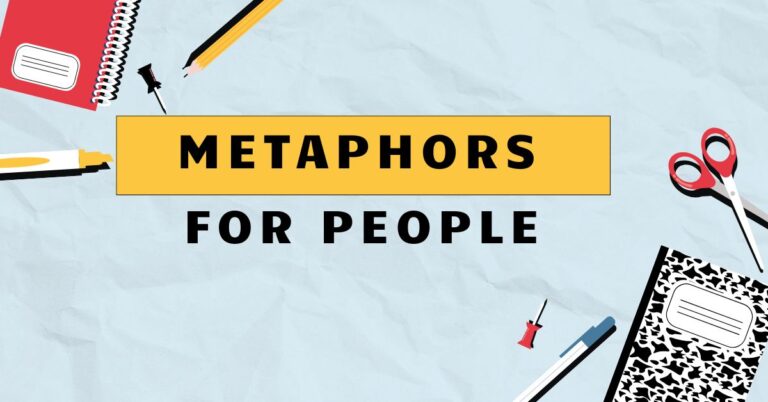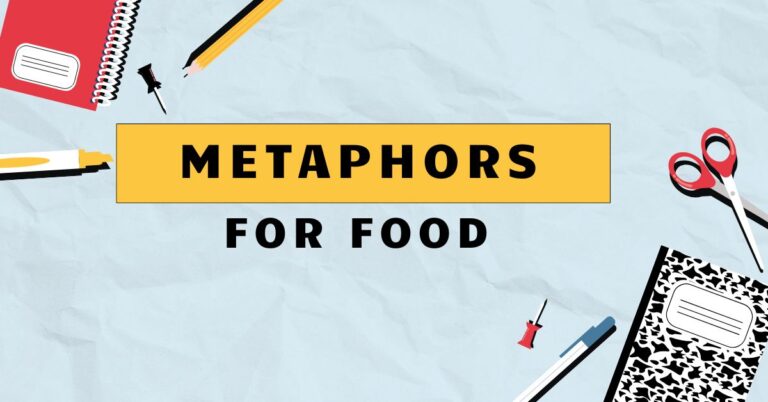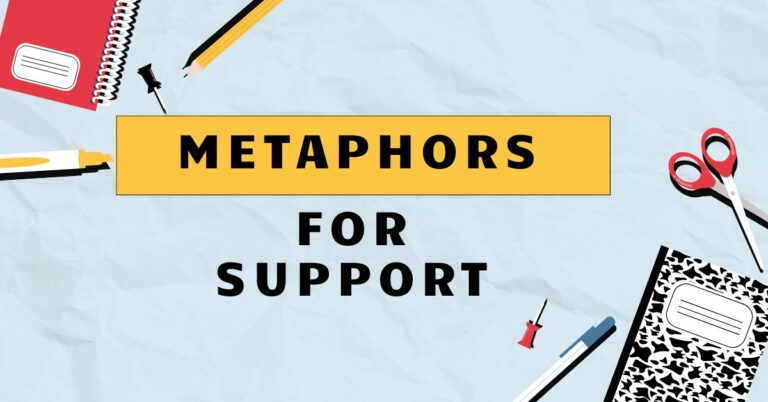37 Communication Metaphors: Enhancing Understanding in Language
Metaphors are fundamental to how we understand the world, and communication is no exception. By using metaphors, we can transform abstract concepts into more tangible and relatable ideas, making complex interactions easier to grasp.
This article explores the rich landscape of metaphors for communication, examining their role in language, their structural elements, and how they shape our perceptions of the communication process. Whether you’re an English language learner, a communication professional, or simply interested in the power of language, this guide provides a comprehensive overview of communication metaphors and their impact on our understanding.
Table of Contents
- Introduction
- Definition of Communication Metaphors
- Structural Breakdown
- Types and Categories of Communication Metaphors
- Examples of Communication Metaphors
- Usage Rules
- Common Mistakes
- Practice Exercises
- Advanced Topics
- FAQ
- Conclusion
Introduction
Communication is an integral part of our daily lives, facilitating interactions, conveying information, and building relationships. Because communication is a complex and often abstract process, we frequently rely on metaphors to simplify and understand its various facets.
These metaphors shape our perceptions, influence our behavior, and impact how effectively we communicate with others. Understanding these metaphors is crucial for anyone seeking to improve their communication skills, whether in personal relationships, professional settings, or academic pursuits.
This article will delve into the different types of communication metaphors, providing examples, usage rules, and practical exercises to enhance your comprehension and application of these powerful linguistic tools.
By exploring the underlying structures and common pitfalls of communication metaphors, this guide aims to equip you with the knowledge and skills necessary to navigate the complexities of language and interaction. This exploration will not only enrich your understanding of English grammar but also improve your overall communication effectiveness.
This knowledge is particularly beneficial for English language learners, as it provides a deeper insight into the nuances of English expression and helps avoid common errors. Communication professionals can also leverage this understanding to craft more compelling and persuasive messages, while academics can use it to analyze and critique communication strategies in various contexts.
Definition of Communication Metaphors
Acommunication metaphoris a figure of speech that uses an image, idea, or object to represent and explain the process of communication. These metaphors are not literal; instead, they draw parallels between communication and something else to make it more understandable and relatable.
They function by transferring qualities or characteristics from the source domain (the image, idea, or object) to the target domain (the communication process). This transfer helps us conceptualize abstract concepts in more concrete terms.
Communication metaphors serve several crucial functions. First, theysimplify complex ideas.
The communication process can be multifaceted, involving encoding, transmission, reception, and decoding. Metaphors break down these steps into more manageable components.
Second, theyinfluence our perceptionof communication. The metaphor we use can shape how we view the roles of the speaker and listener, the purpose of the interaction, and the potential outcomes.
Third, theyguide our actions. If we view communication as a battle, for example, we might adopt a more aggressive and competitive approach.
Finally, they areculturally embedded. Certain metaphors are more prevalent and accepted in specific cultures, reflecting shared values and beliefs about communication.
The context in which communication metaphors are used varies widely. They appear in everyday conversations, business meetings, academic writing, and even political speeches.
For example, someone might say, “I’m trying to get my point across,” using the conduit metaphor to imply that communication is about transferring information from one container (the speaker’s mind) to another (the listener’s mind). Understanding these contexts is essential for interpreting the intended meaning and potential implications of the metaphor.
Structural Breakdown
The structure of a communication metaphor typically involves two key elements: thesource domainand thetarget domain. The source domain is the concrete concept or image that is used to represent the abstract idea of communication, while the target domain is the communication process itself.
The metaphor works by mapping features from the source domain onto the target domain. This mapping process involves identifying similarities or parallels between the two domains and using these similarities to explain and understand communication.
For example, in the metaphor “Communication is a bridge,” the source domain is “bridge,” and the target domain is “communication.” The metaphor maps features of a bridge, such as connecting two points, providing a pathway, and requiring structural integrity, onto the communication process. This suggests that communication should connect people, provide a clear path for information, and be well-constructed and reliable.
The effectiveness of a metaphor depends on how well the features of the source domain align with the characteristics of the target domain. A strong metaphor will offer a clear and insightful perspective on communication, while a weak metaphor may be confusing or misleading.
Furthermore, the structure of a communication metaphor often includes specific linguistic cues that signal its metaphorical nature. These cues can include verbs, nouns, adjectives, and adverbs that are used in non-literal ways.
For example, in the sentence “His words were like daggers,” the word “like” signals that the comparison is not literal and that the words are being described metaphorically as having the sharp and harmful qualities of daggers. Recognizing these linguistic cues is crucial for identifying and interpreting communication metaphors accurately.
Types and Categories of Communication Metaphors
Communication metaphors can be categorized based on the source domain they draw upon. Understanding these categories helps in analyzing the underlying assumptions and implications of different metaphors.
The Conduit Metaphor
TheConduit Metaphor, as described by Michael Reddy, is one of the most pervasive metaphors for communication. It views communication as a process of transferring thoughts and ideas from one person’s mind to another, as if they were objects being placed in a container and then transported through a channel.
The speaker “puts” ideas into words, and the listener “extracts” them. This metaphor emphasizes the role of language as a neutral carrier of meaning.
This metaphor has several implications. First, it assumes thatmeaning is fixed and inherent in the words themselves, rather than being constructed through interaction.
Second, it suggests thatcommunication is successful when the listener receives the exact same meaning that the speaker intended. Third, it can lead to a view of communication as a one-way process, with the speaker being primarily responsible for ensuring that the message is clear and accurate.
Communication as a Journey
TheCommunication as a Journeymetaphor frames communication as a process of moving from one point to another, often with a specific goal or destination in mind. This metaphor emphasizes the sequential and dynamic nature of communication, highlighting the challenges and obstacles that may be encountered along the way.
The participants in the communication process are seen as travelers, and the message is the vehicle that carries them towards their destination.
This metaphor can be used to describe various aspects of communication, such as the process of developing an argument, the progress of a conversation, or the evolution of a relationship. It suggests thatcommunication is not always a straightforward process, and that it may involve detours, roadblocks, and unexpected turns.
It also highlights the importance of planning and preparation, as well as the need to adapt to changing circumstances.
Communication as Building
TheCommunication as Buildingmetaphor views communication as a process of constructing something, such as an argument, a relationship, or a shared understanding. This metaphor emphasizes the collaborative and incremental nature of communication, highlighting the importance of careful planning, solid foundations, and ongoing maintenance.
The participants in the communication process are seen as builders, and the message is the material that they use to construct their edifice.
This metaphor suggests thatcommunication is a gradual and cumulative process, with each interaction building upon previous ones. It also highlights the importance of clear communication, as misunderstandings can lead to weak or unstable structures.
Furthermore, it emphasizes the need for ongoing maintenance and repair, as relationships and shared understandings can deteriorate over time if they are not properly cared for.
Communication as Performance
TheCommunication as Performancemetaphor frames communication as a type of theatrical performance, with speakers as actors and listeners as audience members. This metaphor emphasizes the role of presentation, style, and audience engagement in effective communication.
It suggests that communication is not simply about transmitting information, but also about creating a particular impression or effect.
This metaphor highlights the importance ofrhetoric, delivery, and nonverbal cuesin communication. It suggests that speakers should be aware of their audience and adapt their performance accordingly.
It also emphasizes the role of emotion and empathy in communication, as speakers need to connect with their audience on an emotional level in order to be truly persuasive or engaging.
Communication as War
TheCommunication as Warmetaphor views communication as a battle or competition, with participants trying to win arguments, defend their positions, and attack their opponents. This metaphor emphasizes the adversarial and competitive aspects of communication, highlighting the importance of strategy, tactics, and power.
The participants in the communication process are seen as combatants, and the message is the weapon that they use to achieve their objectives.
This metaphor can be used to describe situations such as debates, negotiations, and conflicts. It suggests thatcommunication is often about winning and losing, and that participants are often trying to gain an advantage over each other.
It also highlights the importance of being prepared, assertive, and persuasive. However, this metaphor can also be problematic, as it can lead to aggressive and unproductive communication patterns.
Examples of Communication Metaphors
To better understand these categories, let’s explore specific examples of communication metaphors within each type.
Conduit Metaphor Examples
The conduit metaphor is prevalent in everyday language. It often involves the idea of transferring thoughts or ideas from one person to another as if they were physical objects.
The following table presents examples of the conduit metaphor in action.
| Example | Explanation |
|---|---|
| “I’m trying to get my point across.” | The speaker is trying to move their idea from their mind into the listener’s. |
| “He poured out his feelings.” | Feelings are treated as a liquid that can be transferred. |
| “She loaded her speech with facts.” | The speech is a container being filled with information. |
| “The message was lost in translation.” | The message is seen as a physical object that can be lost or distorted. |
| “I passed on the information.” | Information is something that can be handed from one person to another. |
| “Can you capture my idea in words?” | Ideas are elusive things that need to be caught and contained. |
| “The meaning is embedded in the text.” | Meaning is something that is physically present within the text. |
| “I’m struggling to put my thoughts into words.” | Thoughts are objects that need to be packaged into words. |
| “He unloaded all his stress.” | Stress is a burden that can be physically removed. |
| “The report conveyed the information effectively.” | The report is a vehicle that carries information. |
| “I need to package this idea for the presentation.” | Ideas are products that need to be wrapped and presented. |
| “She injected some humor into the speech.” | Humor is a substance that can be added to something. |
| “The author infused the book with emotion.” | Emotion is a quality that can be added to a book. |
| “He transmitted the data securely.” | Data is something that can be sent from one place to another. |
| “I’m trying to download the information from the lecture.” | Information is something that can be retrieved from a source. |
| “The speaker expressed his views clearly.” | Views are something that can be pushed out or conveyed. |
| “I need to extract the key points from the document.” | Key points are things that need to be pulled out and identified. |
| “She encapsulated the main idea in one sentence.” | The main idea is something that can be contained within a sentence. |
| “He distilled the essence of the argument.” | The essence of the argument is something that can be purified and extracted. |
| “I’m trying to channel my energy into this project.” | Energy is a resource that can be directed towards a specific goal. |
| “The report delivered the message effectively.” | The report is a vehicle bringing the message to the receiver. |
| “He imparted his wisdom to the students.” | Wisdom is a valuable asset that can be given to others. |
| “She broadcasted the news to the world.” | News is something that can be transmitted to a wide audience. |
These examples illustrate how deeply ingrained the conduit metaphor is in our language. It often goes unnoticed, but it shapes how we think about and approach communication.
Journey Metaphor Examples
The journey metaphor frames communication as a process of moving from one point to another, often with a specific goal in mind. The following table provides examples of this metaphor.
| Example | Explanation |
|---|---|
| “Let’s embark on this discussion.” | The discussion is a journey that is about to begin. |
| “We’re on the same wavelength.” | Communication is a shared path or frequency. |
| “The conversation took a wrong turn.” | The conversation went in an unintended direction. |
| “We’re getting nowhere with this argument.” | The argument is not progressing towards a resolution. |
| “We’ve reached a dead end.” | The communication has come to a standstill. |
| “Let’s retrace our steps to understand where we went wrong.” | Going back to previous points to understand errors. |
| “We need to navigate this tricky situation carefully.” | The situation is a complex landscape that requires careful planning. |
| “The speaker guided us through the presentation.” | The speaker is leading the audience on a journey of understanding. |
| “We’re making progress in our understanding.” | Understanding is a destination that we are moving towards. |
| “Let’s explore this topic further.” | The topic is a territory that needs to be investigated. |
| “The discussion detoured into a less relevant topic.” | The conversation went off the main course. |
| “We’re on track to reach a consensus.” | The communication is progressing as planned. |
| “Let’s chart a course for the future.” | Planning the future is like mapping out a journey. |
| “We need to bridge the gap between our perspectives.” | The gap is a distance that needs to be overcome. |
| “The conversation stalled due to a misunderstanding.” | The conversation stopped moving forward. |
| “Let’s pave the way for better communication.” | Making it easier to communicate in the future. |
| “We’ve come a long way in our discussion.” | Significant progress has been made. |
| “The speaker took us on a journey through history.” | The speaker guided the audience through a historical narrative. |
| “We’re at a crossroads in our decision-making process.” | A critical point where a choice must be made. |
| “The argument veered off course.” | The argument deviated from its intended direction. |
| “Let’s summit this challenge together.” | Communication is seen as climbing a mountain together. |
| “We’re lost in the woods of this complex issue.” | The issue is a confusing and disorienting terrain. |
| “We need a roadmap to navigate this project.” | The project is a journey that requires a detailed plan. |
These examples highlight how the journey metaphor emphasizes the process and progress of communication.
Building Metaphor Examples
The building metaphor views communication as a process of constructing something, such as an argument or a relationship. Here are examples of this metaphor.
| Example | Explanation |
|---|---|
| “We need to lay the foundation for a strong relationship.” | Establishing the initial elements for a lasting bond. |
| “Let’s build on that idea.” | Adding to and expanding an existing concept. |
| “The argument fell apart due to weak evidence.” | The argument collapsed because it lacked support. |
| “We need to construct a solid argument.” | Creating a well-reasoned and supported case. |
| “The relationship is crumbling.” | The relationship is deteriorating and weakening. |
| “Let’s reinforce our understanding with more examples.” | Strengthening our comprehension by adding more support. |
| “We need to tear down the barriers to communication.” | Removing obstacles that prevent effective interaction. |
| “The speaker erected a convincing argument.” | The speaker built a strong and persuasive case. |
| “Let’s cement our agreement with a formal contract.” | Solidifying the agreement to make it permanent. |
| “The project is taking shape.” | The project is gradually developing and becoming more defined. |
| “We need to patch up our differences.” | Repairing the damage caused by disagreements. |
| “The team is laying the groundwork for success.” | Preparing the initial steps for achieving a goal. |
| “Let’s renovate our communication strategies.” | Improving and updating our methods of interaction. |
| “The plan is taking form.” | The plan is gradually developing and becoming more concrete. |
| “We need to scaffold the learning process for the students.” | Providing support to help students build their knowledge. |
| “Let’s construct a framework for collaboration.” | Creating a structure to support teamwork. |
| “The ideas are stacked on top of each other.” | Ideas are layered and built upon each other. |
| “We need to strengthen the foundation of our business.” | Improving the core elements of the business. |
| “The proposal is well-structured.” | The proposal is organized and coherent. |
| “Let’s mortar our ideas together.” | Combining ideas to create a cohesive whole. |
| “The presentation was well-built and convincing.” | The presentation was structured and persuasive. |
| “The bridge of understanding was shaky.” | The connection was unstable and unreliable. |
| “Let’s fortify our position with evidence.” | Strengthening our stance with supporting information. |
These examples show how the building metaphor emphasizes the construction and maintenance of communication.
Performance Metaphor Examples
The performance metaphor frames communication as a type of theatrical performance, with speakers as actors and listeners as audience members. The following table provides examples.
| Example | Explanation |
|---|---|
| “He played his part well in the negotiation.” | He acted effectively and convincingly in the negotiation. |
| “She stole the show with her presentation.” | Her presentation was the most impressive and memorable. |
| “The speaker commanded the audience’s attention.” | The speaker controlled and captivated the audience. |
| “The politician delivered a powerful speech.” | The politician gave a compelling and impactful speech. |
| “He’s a natural performer.” | He is naturally skilled at presenting and engaging with an audience. |
| “She put on a show for the cameras.” | She acted in a way that was intended to impress or deceive. |
| “The presentation was a stage for his ideas.” | The presentation provided a platform for him to showcase his ideas. |
| “He rehearsed his speech several times.” | He practiced his speech to improve his delivery. |
| “The audience applauded his performance.” | The audience showed their approval and appreciation. |
| “She took center stage during the debate.” | She became the focus of attention during the debate. |
| “He’s always acting.” | He is often insincere and putting on a false persona. |
| “The CEO scripted every word of the announcement.” | The CEO carefully planned and wrote the announcement. |
| “The comedian bombed on stage.” | The comedian’s performance was unsuccessful. |
| “She captivated the audience with her storytelling.” | She fascinated and entranced the audience. |
| “The speaker lost his audience.” | The speaker failed to keep the audience engaged. |
| “He’s a master of improvisation.” | He is skilled at speaking and acting without preparation. |
| “The presentation was well-staged.” | The presentation was carefully planned and executed. |
| “She portrayed the character convincingly.” | She acted the part in a believable manner. |
| “The politician adopted a new persona.” | The politician changed his public image. |
| “He performed under pressure.” | He acted effectively despite the challenging circumstances. |
| “The act was a tough one to follow.” | The previous performance was so good, it’s hard to match. |
| “He walked off stage after the argument.” | He ended the discussion abruptly. |
| “Her words were carefully choreographed.” | Her words were planned and executed as a dance routine. |
These examples illustrate how the performance metaphor emphasizes the presentational aspects of communication.
War Metaphor Examples
The war metaphor views communication as a battle or competition. Here are examples of its use.
| Example | Explanation |
|---|---|
| “He attacked my argument.” | He criticized and challenged my argument. |
| “She defended her position.” | She protected and supported her viewpoint. |
| “We need to fight for our rights.” | We need to struggle and advocate for our entitlements. |
| “He won the debate.” | He was more persuasive and successful in the debate. |
| “She lost the argument.” | She was unable to convince others of her viewpoint. |
| “We need to strategize our communication plan.” | Planning our communication like a military campaign. |
| “He shot down my proposal.” | He rejected my proposal abruptly and decisively. |
| “She countered his claims with solid evidence.” | She responded to his assertions with strong proof. |
| “He launched a scathing criticism.” | He delivered a harsh and damaging critique. |
| “We need to arm ourselves with facts.” | We need to prepare with supporting information. |
| “The company is battling for market share.” | The company is competing fiercely for customers. |
| “He surrendered to her arguments.” | He gave up opposing her viewpoints. |
| “The politician targeted his opponent with negative ads.” | The politician focused his attacks on his rival through advertising. |
| “We need to conquer this challenge.” | We need to overcome and defeat this obstacle. |
| “She undermined his authority.” | She weakened his power and influence. |
| “He’s invincible in debates.” | He’s impossible to defeat in discussions. |
| “The proposal fell on deaf ears.” | The proposal was ignored and unheeded. |
| “We need to defend our intellectual property.” | We need to protect our copyrighted material. |
| “He crushed the competition.” | He defeated the competition decisively. |
| “She outmaneuvered him in the negotiation.” | She used clever tactics to gain an advantage. |
| “He fought tooth and nail for his beliefs.” | He struggled intensely to defend his principles. |
| “She bombed the interview.” | She failed dramatically in the interview. |
| “We need to take a stand.” | We need to assert our position firmly. |
These examples reveal how the war metaphor emphasizes the competitive and adversarial aspects of communication.
Usage Rules
While metaphors are powerful tools, they should be used thoughtfully. Here are some rules for their effective use:
- Clarity: Ensure the metaphor enhances understanding rather than obscuring it. The comparison should be clear and easily relatable.
- Relevance: The source domain should be relevant to the target domain. The qualities being transferred should make sense in the context of communication.
- Consistency: Avoid mixing metaphors that create conflicting images. Maintain a consistent metaphor throughout your communication.
- Appropriateness: Consider the audience and context. Choose metaphors that are appropriate for the situation and the people involved.
- Originality: Strive for fresh and creative metaphors. Overused metaphors can become clichés and lose their impact.
Exceptions to these rules may occur in creative writing or when deliberately using mixed metaphors for humorous effect. However, in most professional and academic contexts, adhering to these rules will ensure that your use of communication metaphors is effective and clear.
Common Mistakes
Several common mistakes can undermine the effectiveness of communication metaphors:
- Mixed Metaphors: Combining metaphors that create illogical or confusing images.
- Incorrect: “We need to nip it in the bud before it snowballs out of control.” (Mixing a gardening metaphor with a snowball metaphor.)
- Correct: “We need to address the issue early before it escalates.”
- Overused Clichés: Relying on tired and unoriginal metaphors.
- Incorrect: “Think outside the box.” (Overused and lacking impact.)
- Correct: “Let’s explore unconventional approaches.”
- Inappropriate Metaphors: Using metaphors that are offensive or insensitive to the audience.
- Incorrect: Using war metaphors in a peace negotiation.
- Correct: Using collaboration metaphors in a peace negotiation.
- Unclear Metaphors: Employing metaphors that are difficult to understand or interpret.
- Incorrect: “The data is a labyrinthine conundrum.” (Too abstract and complex.)
- Correct: “The data is a complex and confusing maze.”
Avoiding these common mistakes will enhance the clarity and impact of your communication metaphors.
Practice Exercises
Test your understanding of communication metaphors with the following exercises.
Exercise 1: Identifying Metaphors
Identify the type of communication metaphor used in each sentence.
| Question | Answer |
|---|---|
| 1. “He shot down all my ideas during the meeting.” | War Metaphor |
| 2. “Let’s build a strong foundation for our partnership.” | Building Metaphor |
| 3. “She captivated the audience with her performance.” | Performance Metaphor |
| 4. “We’re on the same wavelength.” | Journey Metaphor |
| 5. “I’m trying to get my point across.” | Conduit Metaphor |
| 6. “The argument fell apart due to lack of evidence.” | Building Metaphor |
| 7. “We need to fight for what we believe in.” | War Metaphor |
| 8. “The speaker guided us through the presentation.” | Journey Metaphor |
| 9. “He poured out his heart to
her.” |
Conduit Metaphor |
| 10. “She stole the show with her amazing speech.” | Performance Metaphor |
Exercise 2: Correcting Mixed Metaphors
Rewrite the following sentences to correct the mixed metaphors.
Exercise 3: Creating Metaphors
Create your own communication metaphors for the following concepts.
Advanced Topics
For those interested in delving deeper into the study of communication metaphors, here are some advanced topics to explore:
- Cognitive Linguistics: Study how metaphors shape our thought processes and understanding of the world.
- Critical Metaphor Analysis: Analyze the ideological implications of metaphors in political discourse and media.
- Intercultural Communication: Explore how cultural differences influence the use and interpretation of communication metaphors.
- Metaphor and Persuasion: Investigate how metaphors can be used to enhance the persuasiveness of messages.
- Metaphor in Organizational Communication: Examine how metaphors shape organizational culture and identity.
These advanced topics offer opportunities to further refine your understanding and application of communication metaphors.
FAQ
Conclusion
Communication metaphors are powerful tools that shape our understanding and perception of the communication process. By simplifying complex ideas, influencing our attitudes, and guiding our actions, metaphors play a crucial role in how we interact with others.
Understanding the different types of communication metaphors, such as the conduit metaphor, the journey metaphor, the building metaphor, the performance metaphor, and the war metaphor, can enhance your ability to communicate effectively in various contexts.
By following the usage rules, avoiding common mistakes, and practicing your skills through exercises, you can harness the power of communication metaphors to improve your communication skills and achieve your communication goals. Whether you are an English language learner, a communication professional, or simply someone interested in the art of communication, mastering the use of metaphors will undoubtedly enrich your understanding and effectiveness in the world of language and interaction.
Remember to always consider your audience, context, and purpose when selecting and using metaphors, and strive for clarity, relevance, and originality in your choices. With careful thought and practice, you can unlock the full potential of communication metaphors and become a more skilled and persuasive communicator.



